The alternation of vegetables with potatoes, melons and gourds is an effective system for increasing the quantity and quality of fruits and herbs. A full crop rotation in the garden also allows you to perform several more important tasks. There is an opportunity to deal more effectively with diseases and pests of plants, it is better to take care of soil fertility.
Material Content:
- 1 Why crop rotation
- 2 Crop rotation in the garden: basic rules
- 3 Crop rotation table at a summer cottage
- 4 The scheme of crop rotation of vegetable crops in the garden
- 5 Using mixed landings
- 6 What crops can be planted in the neighborhood
- 7 What can not be planted nearby
- 8 Practical advice on organizing crop rotation
Why crop rotation
The optimal annual change of annual plants in the field and in the garden is considered optimal. Such rotation is carried out according to certain rules, taking into account the botanical affiliation of plants, the requirements for light, soil, irrigation. If the area of the plot is only a few hundred hectares of land, then in this case, crop rotation can also be organized. This is one of the simple and affordable ways to increase productivity, save on pesticides.
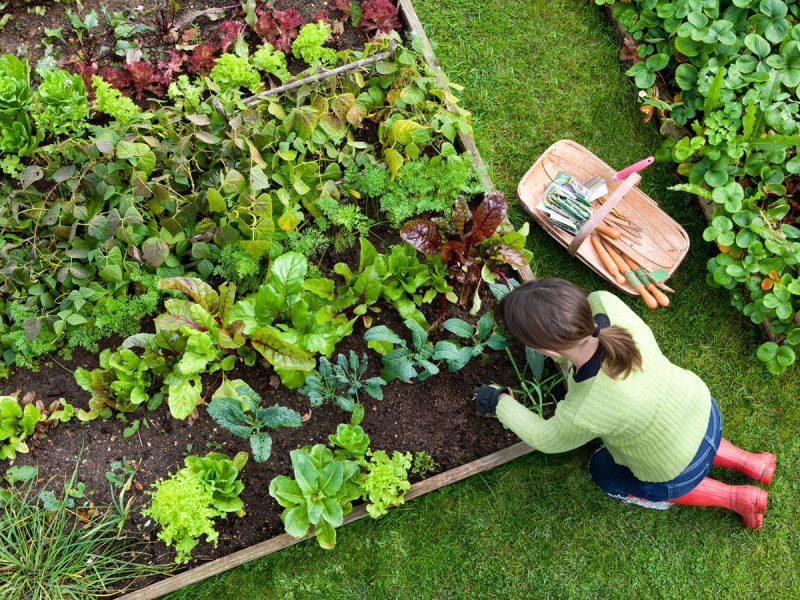
One of the purposes of this rotation is the most obvious. The plant changes and the pests that attacked the previous culture remain without food, their development cycle is interrupted. The first to die are microscopic pathogens, insect pest larvae.
Crop rotation in the garden: basic rules

In the plant alternation scheme, the most important requirements of agricultural technology are necessarily taken into account. The basic rules of crop rotation - do not place the same species and varieties on the same plot for 2–3 seasons. Particularly depletes the land of sunflower. "Flower of the sun" is not recommended to grow in the same area for 5-7 years.
Restoration of soil depleted by a powerful plant is required.Leave the plot for steam, or sow alfalfa, vetch or sainfoin. Then they dig the soil along with legumes.
Potatoes consume a specific set of nutrients from the soil. Representatives of nightshade families, for example, tomatoes or eggplants planted the next year after potatoes, will not get the macro- and microelements they need. But the Colorado potato beetle will have the opportunity to further develop. The pest prefers nightshade to all other botanical families.
Crop rotation table at a summer cottage
The main field, vegetable, gourds, are combined into compatibility groups. Selecting specific names of vegetables, determine how many beds or plots will be required in the garden. Assign numbers to them, make a table or diagram in which they indicate in advance what and on which bed should be planted.
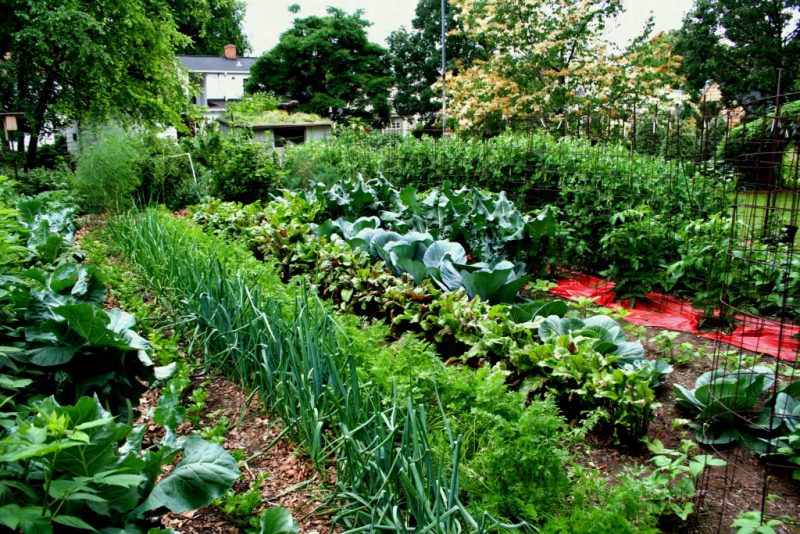
In this work, a summer house plan is used, which should show the locations of trees, berry bushes, flower beds and plots for vegetables.
Next year, annual plants and some biennials are not placed again in the same places.
Keep in mind that cabbage, as well as tomatoes, celery, cucumbers, zucchini and pumpkins need more nitrogen in the soil. Moderate needs of radish, spinach, onions, potatoes, carrots, beets, kohlrabi. Bean, spicy herbs need even less nitrogen.
Table crop rotation of vegetable crops in the garden, compiled taking into account the biological characteristics of vegetables:
| Plot number 1 | Plot number 2 | Plot number 3 |
|---|---|---|
| Beetroot Potatoes Carrot Radish Onion | Green peas Sweet corn Bell pepper Tomatoes Pumpkin | White cabbage Savoy cabbage Cauliflower Broccoli Salad |
Vegetables from plot No. 3 are grown in the first plot next year. Crops from the first plot should grow in the second plot.
Placing vegetables on 8 plots in areas where gourds grow:
| 1 | 2 | 3 | 4 | 5 | 6 | 7 | 8 |
|---|---|---|---|---|---|---|---|
| Pepper, tomatoes | Peas | Cabbage | Corn sugar | Potatoes | Zucchini, watermelons, melons | Cucumbers, leafy greens | Beans |
There are no perennials in the crop rotation chart or table. They grow in the same place for several years. They are usually placed around the perimeter or at the end of the plot so that they do not obscure other crops.
Even several fruit trees provide protection from the wind, attract pollinators. Among the trees in the garden, there are small areas where you can grow lettuce, dill, asparagus, parsley and garlic.
The scheme of crop rotation of vegetable crops in the garden
A drawing showing the names of vegetables grown is prepared in the winter, and in the spring before planting, changes, additions are made, but taking into account the basic requirements. Any crop rotation scheme should contain a list of plants for each plot. Various icons in the figure show the placement of vegetables, herbs, herbs.
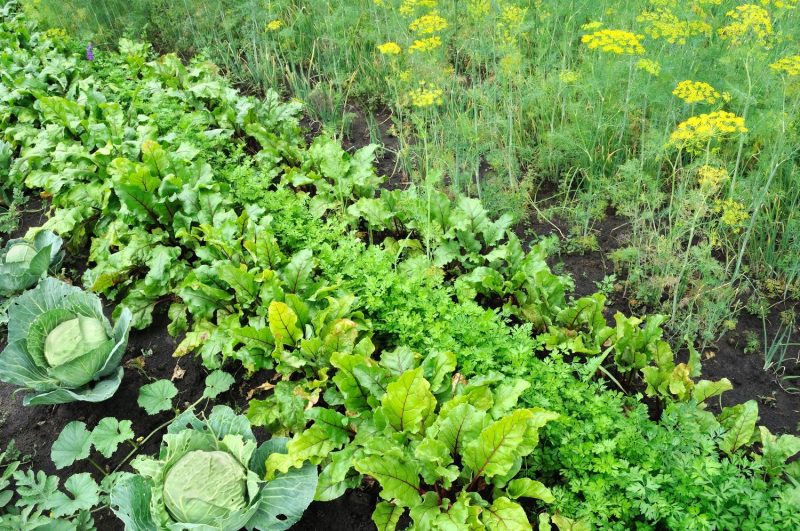
Crop rotation scheme:
- The first plot: potatoes, compacted radishes, carrots, onions and parsley.
- The second plot: green peas, zucchini, pumpkin, sweet corn, packed with beans, tomatoes and sweet pepper.
- Third plot: white cabbage, compacted with cucumbers, cauliflower.
If the number of beds allows, then another scheme of crop rotation is used:
Garden No. 1: radishes, early varieties of white cabbage.
No. 2: green peas, leafy greens.
No. 3: potatoes (varieties of different ripening dates), onions after harvesting early potatoes.
No. 4: carrots, beetroot, radish.
No. 5: tomatoes, bell peppers, eggplant.
Number 6: zucchini, cucumbers.
No. 7: beans, beans, onions, garlic.
There are no ideal schemes, rotation, namely, what, after which it can be planted, largely depends on the size of the garden, the climate of the area, the type of soil and other conditions. An important factor is the preferences of the owner of the cottage.
Using mixed landings
Sealers allow you to expand the list of plants for small cottages.In a small garden between rows with potato bushes, radishes can be planted. Other vegetables are not suitable due to the same requirements for the terms of maturity and harvest.
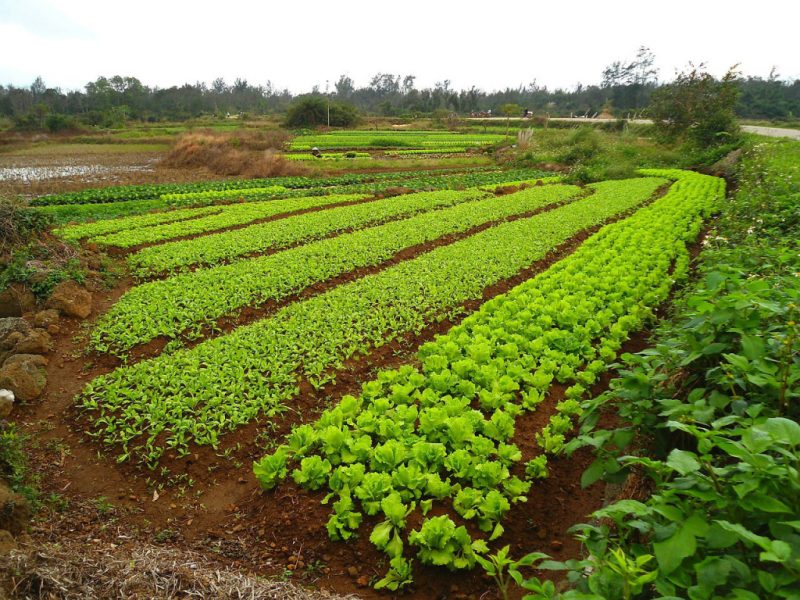
Dense planting is a good way to control weeds.
Corn stalks are a strong support for weak shoots of climbing beans. When planting, you can put the seeds of two different plants in one hole. Beans with wide leaves cover the soil around the corn stalk, suppresses weeds.
White cabbage can be condensed with cucumbers. The scourges of the "companion" will find protection from the scorching sun under the cabbage. Cucumbers will help protect the soil under the cruciferous plant from weeds.
What crops can be planted in the neighborhood
Asparagus and tomatoes planted well together. Bush beans are suitable neighborhood on the same bed with potatoes, corn, celery. There are no problems with the placement of cabbage. Representatives of this genus get along well with beets, cucumbers, celery, potatoes, onions. An unpretentious neighbor in the garden is carrots. Nearby you can grow tomatoes, onions, and legumes.
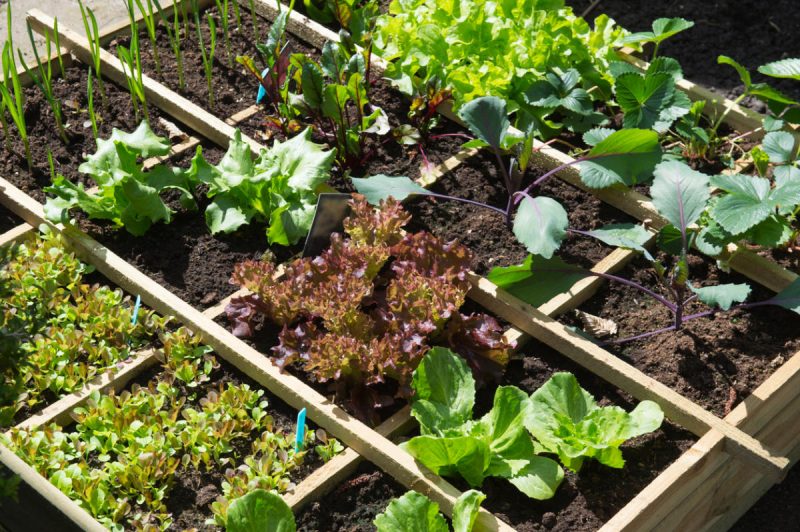
Corn perfectly adjoins pumpkin, zucchini, cucumbers, potatoes, peas. The onion is suitable for the plot next to carrots, beets, tomatoes. Tomatoes prefer carrots, parsley, asparagus as neighbors.
What can not be planted nearby
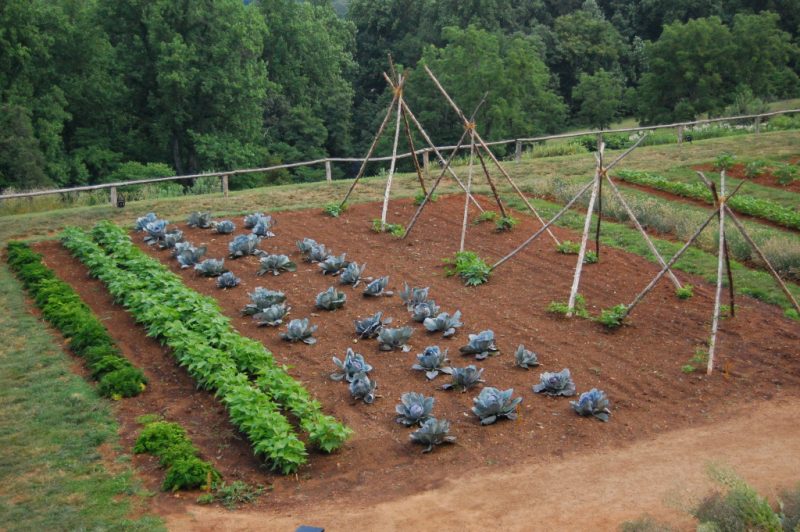
Beans get along poorly with onions and beets. Dill and parsley should not be grown near carrots. Cucumbers and peas do not like the neighborhood with potatoes. Away from each other, you need to grow members of the nightshade family: potatoes, tomatoes and eggplant.
Practical advice on organizing crop rotation
The alternation of plants in the garden is necessary to preserve the fertility and structure of the soil, prevent its destruction during the cultivation of the same crops. Correct crop rotation in the garden implies a rotation in which the next year the same area will be reserved for a plant with opposite biological characteristics and requirements.
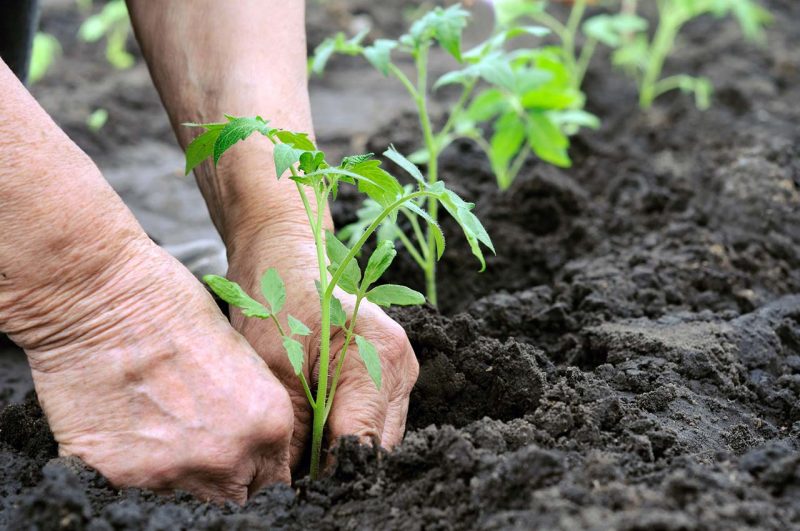
Vegetables that are grown for tubers, bulbs or root crops, next year should be replaced by cucumbers, lettuce, tomatoes, zucchini.
To obtain sustainable yields, plant species on the plots should be correctly alternated every year. In addition, you need to know the characteristics of each variety, whether they are suitable for the natural conditions and microclimate of the site. Rotation of vegetables must be supported by concern for soil fertility, plant protection.
The site, which is just received and developed, is first landscaped and cultivated. If the soil is excessively wet, it is recommended to make ridges in the garden, leave grooves between them to drain water. Acidic substrates need liming to normalize pH. Light sandy soils are “heavier” with peat and clay. Fertile soils are enriched: when digging, humus, a complex fertilizer containing all the nutrients, is added.

Growing on one of the plots of green manure (green fertilizers) contributes to the accumulation of available nitrogen, eliminates the need to make nitrate. The following year, the plot is allotted for vegetables that require a high nitrogen content in the soil.
Experienced growers think over a fruit-grower for years to come.












